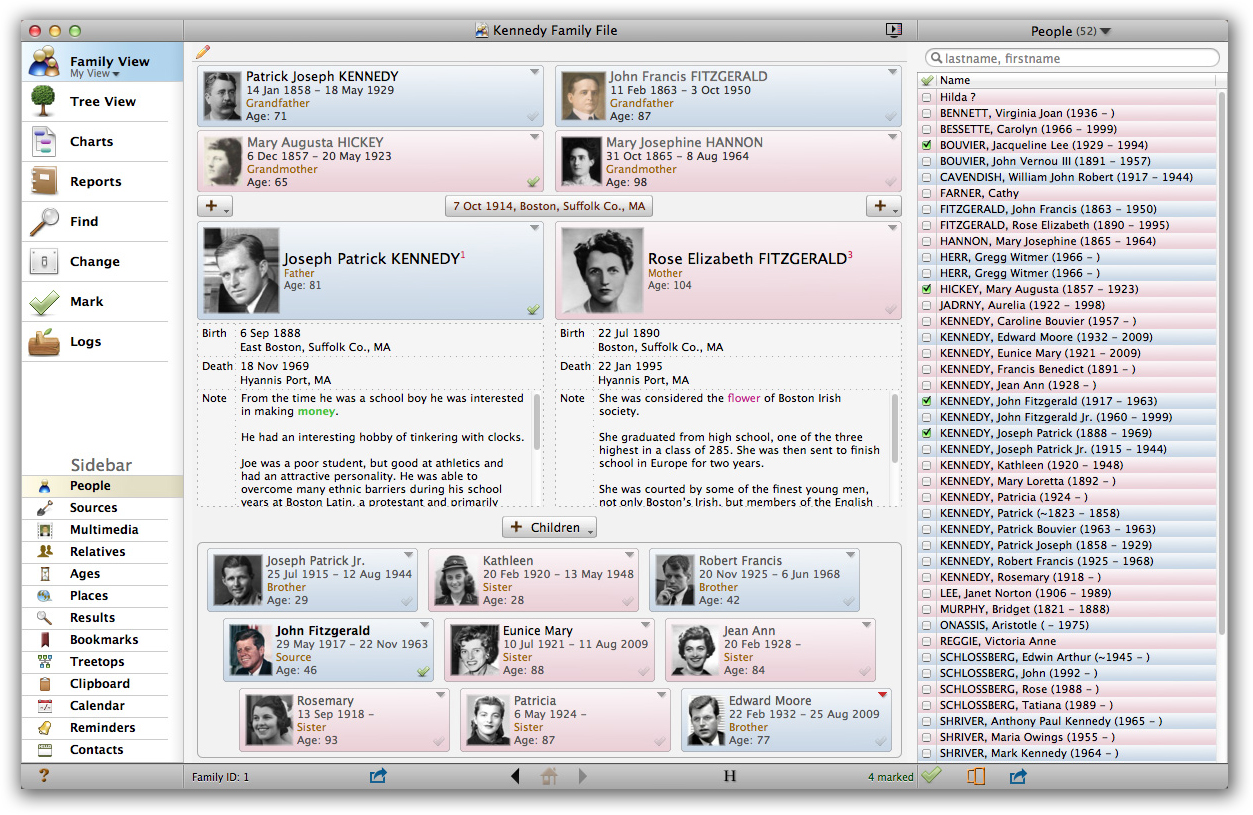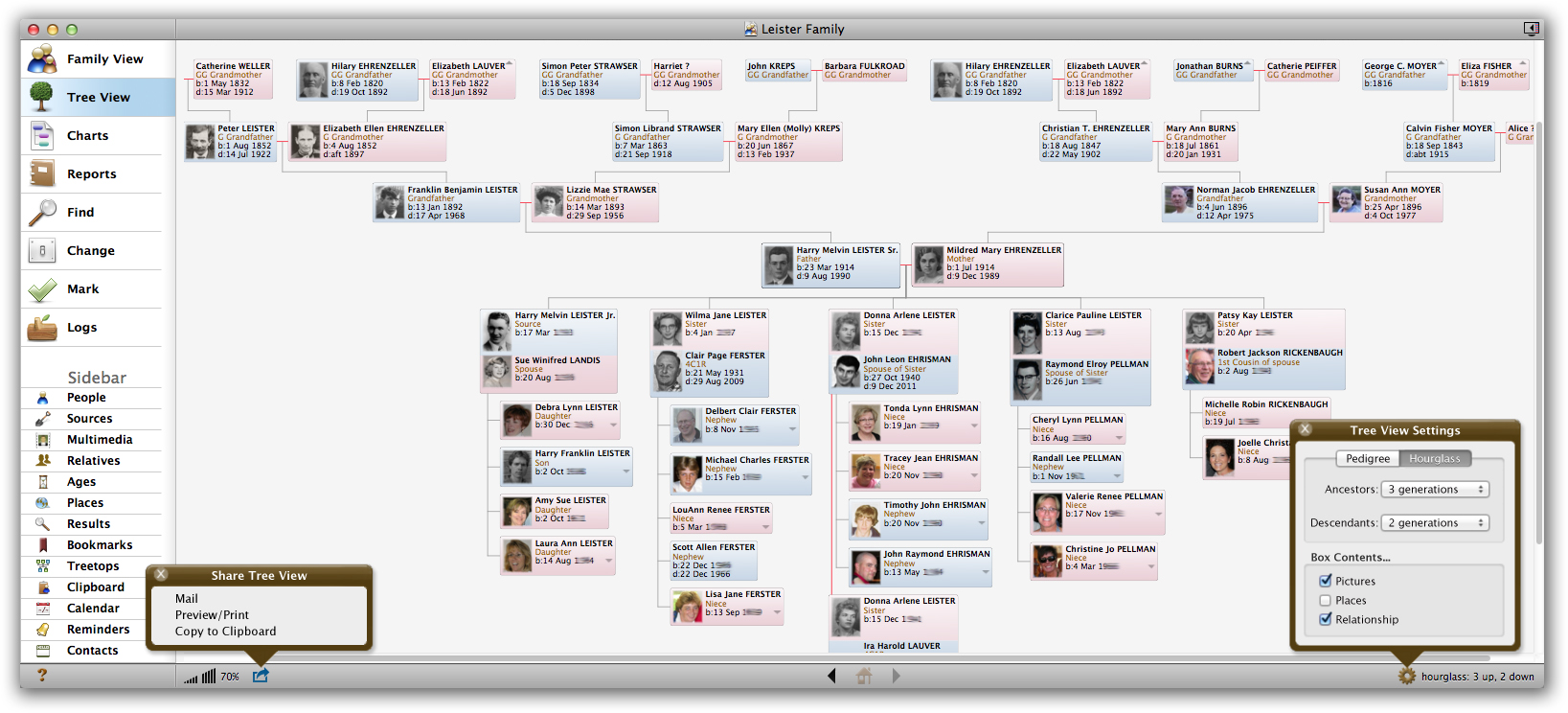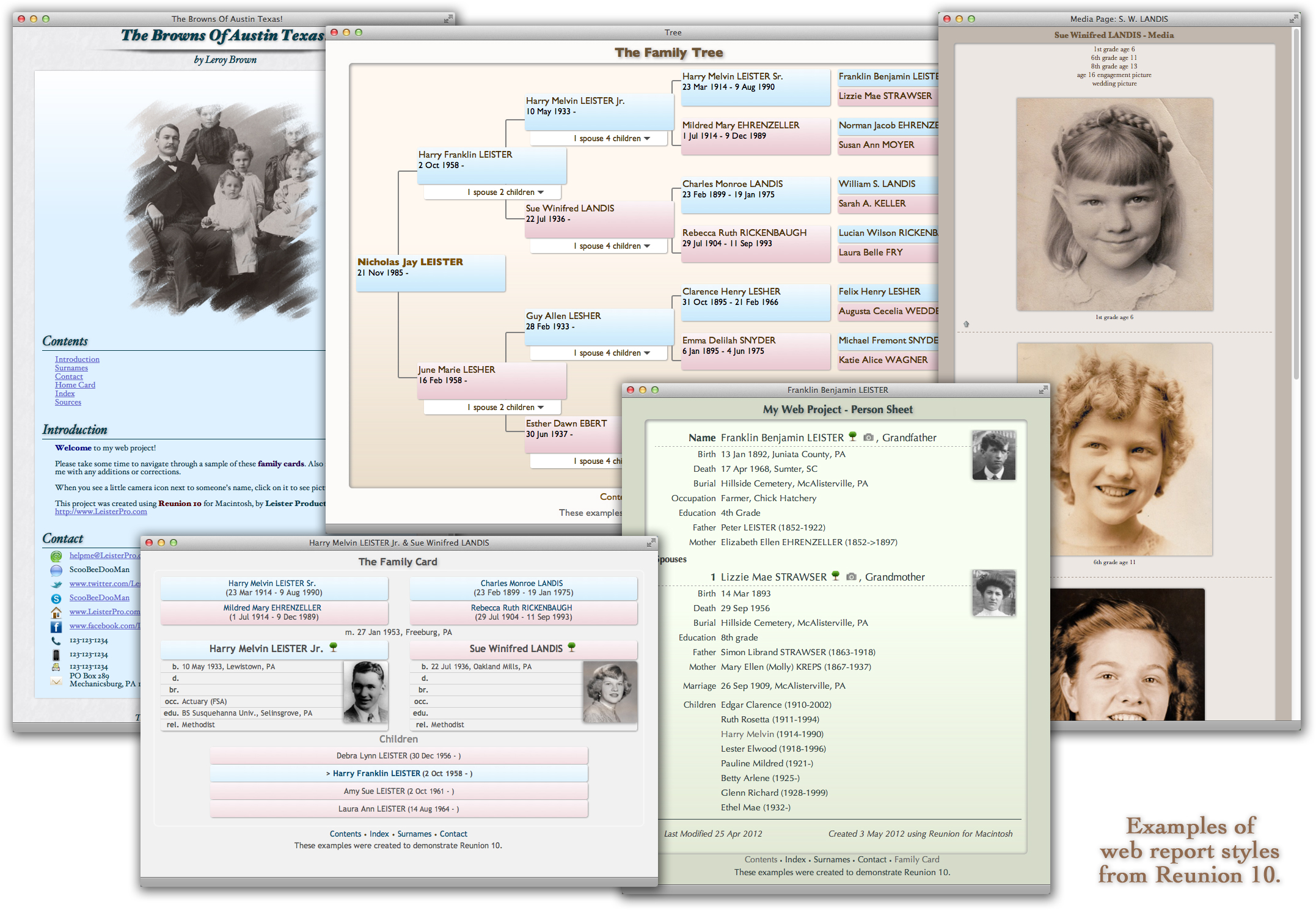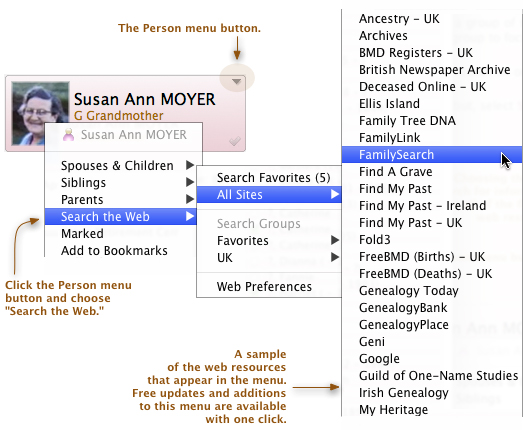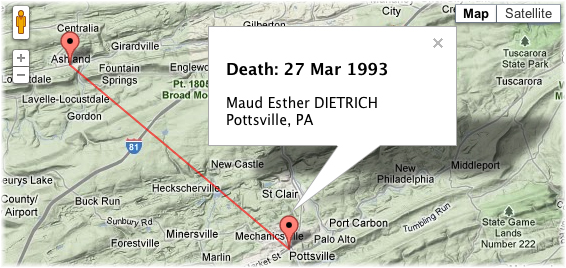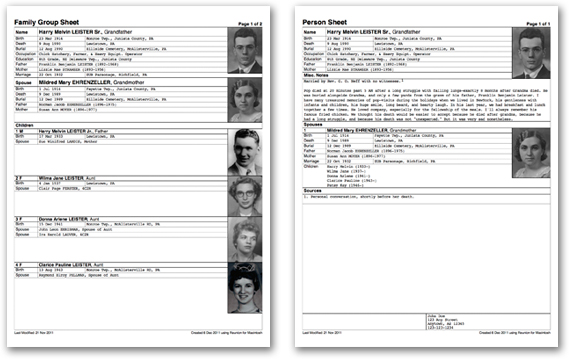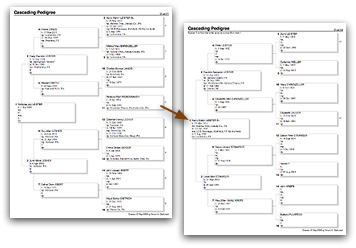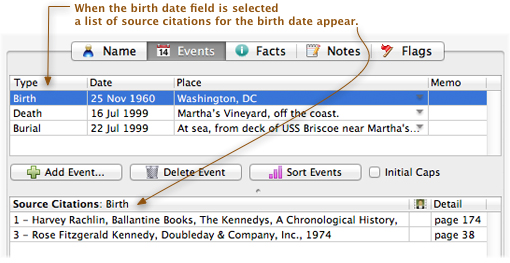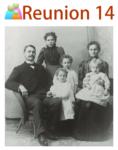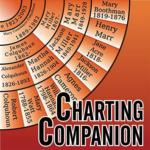Reunion 14 for the Mac - Digital Download
£89.95
The latest version 14 of the highly acclaimed leading genealogy program. Requires Mac OS X 10.12 (Sierra) or newer.
Reunion helps you to document, store, and display information about your family — your ancestors, descendants, cousins, etc. It records names, dates, places, facts, plenty of notes, sources of information, pictures, sounds, and videos. It shows family relationships in an elegant, graphic form — people and families are linked in an easy-to-understand fashion.
Reunion makes it easy to publish your family tree information — even if you want to share it on the Web or carry it on your devices. You can automatically create common genealogy reports, charts, forms, and books, as well as birthday calendars, mailing lists, questionnaires, indexes, and other lists. Reunion even creates slideshows, calculates relationships, ages, and statistics.
Reunion creates large, graphic tree charts allowing complete on-screen editing of boxes, lines, fonts, and colors. Wall charts for family reunions are just one of its specialties.
This is a heavy item so postage will be increased if it is to be shipped outside the UK.
Note: If you buy this item as part of an order containing items that do not have free postage you will be charged for postage at the appropriate rate for those items.
Reunion helps you to document, store, and display information about your family - your ancestors, descendants, cousins, etc. It records names, dates, places, facts, plenty of notes, sources of information, pictures, sounds, and videos. It shows family relationships in an elegant, graphic form - people and families are linked in an easy-to-understand fashion.
Reunion makes it easy to publish your family tree information - even if you want to share it on the Web. You can automatically create common genealogy reports, charts, and forms, as well as birthday calendars, mailing lists, questionnaires, indexes, and other lists. Reunion even calculates relationships, ages, life expectancies, and statistics.
Reunion also creates large, high-resolution, graphic charts allowing complete on-screen editing of boxes, lines, fonts, and colors. Wall charts are one of its specialties.
Click Here for Reunion's New Features
Top 20 Reasons to Buy Reunion
- 1. Easy to enter your family information - Reunion lets you store every scrap of information: names, dates, places, facts, attributes, plenty of room for notes, free-form text, memos, custom fields, contact information, marital status, and even research logs.
- 2. Easy to climb the tree - Use the "tree view" and click to navigate up or down the tree. Always know where you are in the family file.
- 3. Add pictures and movies - Digitize your memories (such as old photos, birth certificates, wills, maps, movies, sound recordings, etc.) and link them to people, families, and source records. You can link multiple multimedia items to a single record, or one multimedia item to multiple records. Reunion lets you display, magnify, and reduce images on screen. It's easy to include pictures in your charts, reports, and Web output. Include a complete description and comments for each item if you like. Create slideshows with custom transitions, music, timing, image size, caption content, etc. Perfect for family reunions!
-
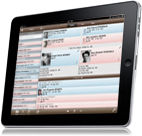 4. Take it with you! - iPhone, iPod Touch and iPad. Take your family with you in a very portable format - on your iPhone, iPod Touch or iPad. Make changes, corrections, and updates while you're on the go, and then bring the changes back to your family file on the Mac. (Reunion for iPhone/iPod Touch and Reunion for iPad are sold separately, on the App Store: iPhone/iPod Touch, iPad.)
4. Take it with you! - iPhone, iPod Touch and iPad. Take your family with you in a very portable format - on your iPhone, iPod Touch or iPad. Make changes, corrections, and updates while you're on the go, and then bring the changes back to your family file on the Mac. (Reunion for iPhone/iPod Touch and Reunion for iPad are sold separately, on the App Store: iPhone/iPod Touch, iPad.)
- 5. Share stuff on the web - Reunion automatically builds reports that you can upload to your web site. That's right: all the necessary files, images, and graphics are generated and linked for you inside one convenient folder for you to upload. Choose from many elegant designs featuring CSS.
- 6. Easy to find people - Quickly find people by name or perform advanced multiple-criteria searches. For example, you could search for "all males born before 1800 in Boston" or "all couples married in Sacramento with adopted children."
- 7. Search the web for records - Pick any person and Reunion will help you to search genealogical resources on the web.
- 8. Create large, graphic tree charts including descendant charts and pedigree charts (up to 99 generations), fan charts, and timeline charts. Provides complete on-screen editing of box color, font, font size, shadow, border, connecting lines, and captions. Move boxes or branches on-screen, by clicking-and-dragging. Automatically change chart orientation; including top-to-bottom, left-to-right, and waterfall models. Zoom out to give you the big picture of the entire chart.
- 9. See places on a map - Reunion integrates with Google Maps to get geo codes for your place entries and draw maps with pin points, for example: showing the birth, residences, and death places of a person.
- 10. Handy dates - You can enter dates as they might be spoken, like a death date as "40 years 3 months 2 days after birth." Reunion shows the weekday for the birth, death, or marriage date, the age at marriage, the current age or life span of a person, and the length of marriage. Also, you can choose from 16 different formats for the display of dates.
- 11. Identify relationships - Reunion tells you, at a glance, how people are related to you (or anyone in your family file). Creates custom lists of relatives. For example, a list of all your removed cousins or a list of all descendants. Tells you the relationship between any two people in your records and creates a chart showing the line between the two people; also tells you the common ancestor.
- 12. Wide variety of customized reports and lists - Some are automatically opened in your word processor and fully formatted with page numbers, page breaks, headers, superscript reference note citations, columns, etc. Some are "book-style": like the narrative ahnentafel report (the ancestors of a person), Register report (the descendants of a couple), and the family history report - perfect for book publishing.
- 13. Graphic forms - Print attractive family group sheets, person sheets, questionnaires, and blank forms. These are great for gathering data from relatives. Reunion lets you automatically print forms for any group of people in your file, for example a questionnaire for all your first cousins.
- 14. Birthday and Anniversary reminders - Have Reunion remind you of upcoming special events in your family. Create easy-to-customize lists of events.
- 15. Import/export - Full GEDCOM import/export lets you transfer data into Reunion without re-typing. You can exchange data with users of other genealogy software (Windows or Macintosh). If you've been collecting information in FileMaker or some other database program, Reunion also features a "text file import, to help you bring the data into Reunion.
- 16. Flexibility - Reunion lets you create charts and reports for "subsets" of your family file. For example, you can make a tree chart for "direct lines only" or share just the relatives of your mother.
- 17. Cascading Pedigree Charts - These are a series of graphic pedigree charts, 4- or 5-generations per page, that are cross referenced with continuation numbers.
- 18. Autocomplete instantly recalls the last 10,000 surnames you've entered, helping you avoid typing the same surname over and over.
- 19. Source documentation - Document the sources of your information using "shared" source records. For example, if you wish to cite a source, you only need to record details about the source one time. Information about the source (the library, the book, the microfilm, the date, the quality of the data, even scans or pictures of original documents) can be entered into a single source record, and you can cite this source on any record, in any data entry field, as many times as you want. You have the option to include sources in reports.
- 20. Easy to get help - We can help you by phone and e-mail. Reunion also includes an easy to use, comprehensive e-manual. No matter where you are in Reunion, a Help button appears that will take you instantly to the right spot in the manual.
What's New in Reunion 14?
- Link media to events, facts and marriages - Media can be linked to individual event, fact and marriage fields using the new media panel that appears in the Edit Person and Edit Family window.
- Reunion can create Custom Report Sections for books, web projects, and word processors. A custom report section (or custom section) is a compilation of information about a specific aspect of the report you’re creating. Custom sections are optional. You choose which ones to include for each report.
- Find / Find & Replace in person & family notes, free-form text and in sources and logs.
- Noteboard for viewing, searching, and editing a single note or a group of person and/or family notes from a separate window.
- Customizable settings for sidebar lists - Display more lines per row and preferred pictures in sidebar lists.
- Bookmarks Sets for maintaining different categories of bookmarks.
- Couples Sidebar for displaying couples in the sidebar.
- Hourglass Chart - A chart showing the ancestors and the descendants of a source couple.
- Everybody Chart - The most comprehensive chart of them all.
- Improved Chart Frames - Many decorative chart border options to choose from.
- Coordinate Grid for charts - Grid coordinates can be used to locate people on large charts.
- Character, word, and paragraph count added to person/family notes, free-form source fields and logs.
- Free-form text tools added to person/family notes, free-form source fields and logs for cleaning up free-form text fields.
- Strikethrough attribute added to person/family notes, free-form source fields and logs.
- Added "Today" button to person/family notes and free-form source fields for quickly adding a new line with today's date.
- Find Relationship Options window for selecting chart box contents in the Find Relationship panel.
- Thumbnails Window
- New Picture frame options.
- Search box can be used when showing thumbnails for sources.
- Menu added to the people search box at the top of the Sidebar and Lists window
- Select from 3 search formats: ‘lastname, firstname’ - ‘firstname, lastname’ - ‘any name’.
- Select from the 20 most recent searches.
- Relatives Sidebar and Relatives List settings
- Added separate Ancestor and Descendant generations options.
- Enhanced the generational list filtering based on continuous blood lines. (For example: First cousins will be listed for Ancestor generations of 2+ and not for 1.)
- Places Sidebar and Places List window. Additions to the place usage list
- Option to show birth & death date for people.
- Option to show event date.
- Option to show person’s age at the time of an event.
- Share/print current or all notes fields for a person or family.
- Sources Sidebar and Sources List - menu in the search box
- 20 most recent searches are remembered.
- 3 search types have been moved from the Show menu to the Search box menu.
- Edit Source: Share current source
- Edit Source: Keyboard shortcut for changing the current source number field
- Logs Window
- Improved text finding for current log or all logs.
- Added find & replace for current or all logs.
- Added free-form text tools.
- Added import button.
- Added support for strikethrough text.
- Charts
- Chart Index - For navigation by name, printing lists of people in the chart, and seeing the names of people in a branch or subchart.
- Chart Orientation suggestions with preview of chart sizes.
- Decorative frames and dividers added to charts.
- New shapes in charts.
- Images and shapes can be rotated.
- Images can be flipped horizontally or vertically.
- Improved resize handles for pictures and shapes.
- Improved line object in charts.
- Lines can be curved.
- Additional line patterns.
- Improved line terminators.
- Support for shadows behind lines.
- New frame choices for pictures in charts.
- New frame choices for pictures in chart boxes.
- New "Entire chart" selection mode - helpful when editing everybody charts.
- Books
- Person Sheets format for the Book Report - Create a book report of person sheets for selected people.
- Quickview and family file navigation available in the Book project window.
- Shapes, lines, frames and dividers added to book project editor.
- Text and images can be rotated in books.
- Images can be flipped in books.
- More picture frame options for pictures.
- Web Publishing
- More flexible Contacts section for web projects.
- New Other Links section for web projects.
- Web Preview button in the Web Settings window.
- Simplified Web Settings > Reports > Files
- Removed the flat option. Flat is no longer supported, it was for old web hosts that did not support folders.
- Removed the Case option. Only lowercase is used. This option was for older web hosts that required uppercase file names.
- Removed text encoding. UTF-8 will always be used. All web browsers now support UTF-8.
- Selectable Couple delimiter - For all of Reunion's reports, books, and web pages.
- When listing siblings in menus, the primary spouse of each sibling is included.
- Added a Clear history option to the History menu.
- GEDCOM 7.0 & GEDZIP.
- Dark mode support.
Minimum Requirements:
- Mac OS X 10.12 (Sierra) or newer
Frequently Asked Questions
Will Reunion import my data from another genealogy program?
Yes, if the program you're using will export a GEDCOM file. This can then be imported into Reunion.
Please note that we cannot guarantee that all data will be imported. The GEDCOM standard is interpreted in different ways by different developers, therefore if you have complex data from your old program such as custom facts, these may not transfer across to Reunion.
Can I use Reunion on more than one Mac?
Yes, as long as it is for your own personal use.
Will my existing data (from my older version of Reunion) be compatible?
Yes, open your old family file(s) in Reunion and they will then be converted and you can save them with a new name.
Can I purchase an upgrade if I don't have my previous Reunion installed?
Yes; the upgrade will only work if you own an older version of Reunion. It is not necessary to install an older version.
